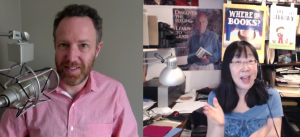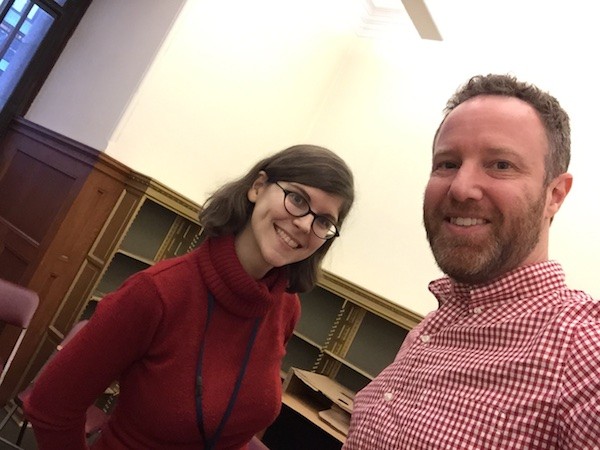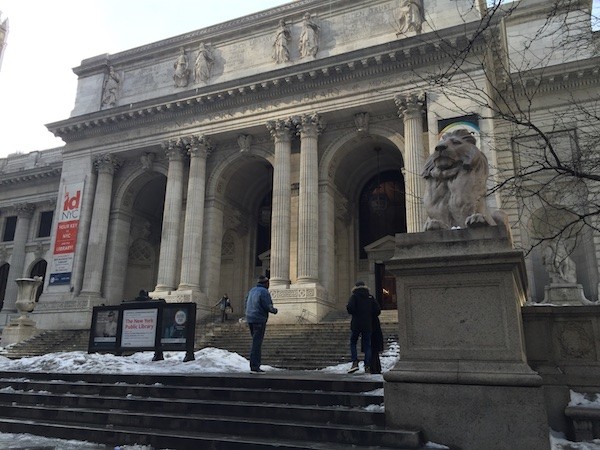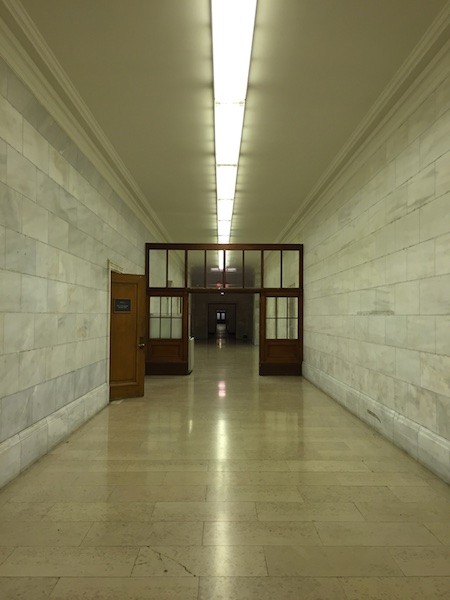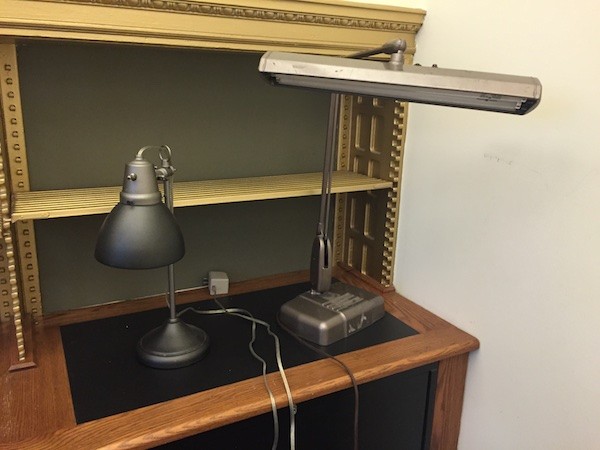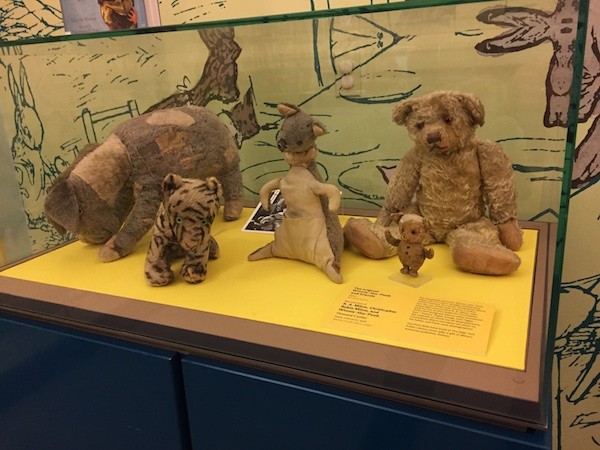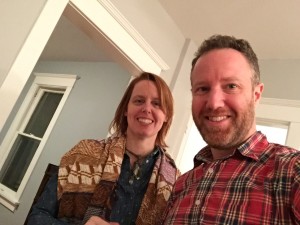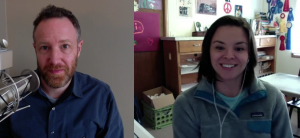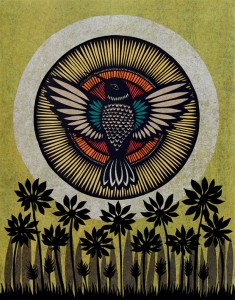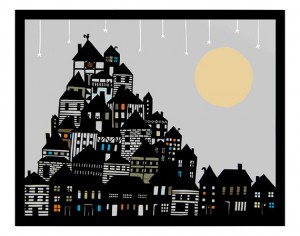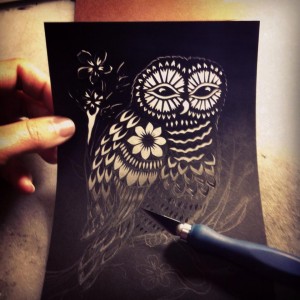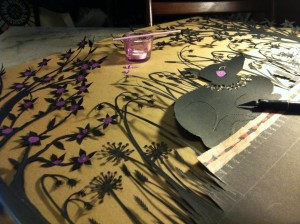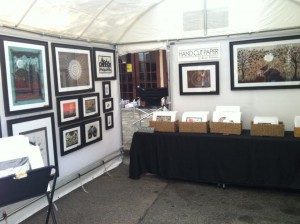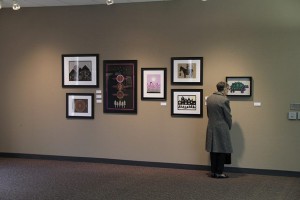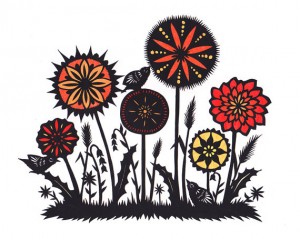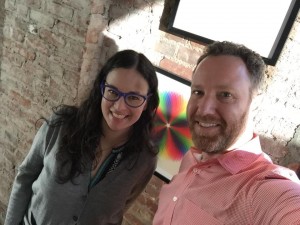Debbie Ridpath Ohi writes and illustrates books for young people. Her first picture book that she is writing and illustrating, Where Are My Books?, debuts from Simon & Schuster Books For Young Readers in May 2015. She has illustrated two picture books by Michael Ian Black, as well as several Judy Blume reissue covers and books. She is currently working on three upcoming book projects. She has been involved in online communities since the very beginning of the internet, and regularly blogs and connects with others online.
- How she took a huge risk in leaving her safe corporate job to pursue a creative career.
- Her path to becoming a full-time writer and illustrator.
- How she got the opportunity to illustrate the most recent Judy Blume reissues.
- How she deals with both positive and negative feedback.
- How she approaches social media, and why she finds it to be an essential part of her career.
- Her productivity tips and an in-depth look at her creative process.
- Why you should regularly move a little bit outside of your comfort zone in order to move your creative work and career forward.
Click ‘play’ above to listen to the podcast, or subscribe on iTunes, or download the MP3.
This podcast is part of the research for a book I am writing called Dabblers vs. Doers, which is about working through RISK as you develop your craft and build a meaningful body of work.
Here are some excerpts from our chat, where we dig into her journey:
Taking the Leap to a Creative Career
“Back in high school, I wasn’t sure what I wanted to do, there were so many things I was interested in. I had my creative side which is writing, illustrating, and music. But of course, ‘No one can make a living in those fields,’ is what went through my head. I grew up in a lower middle income family, so it was assumed I would either go into medicine or law if my marks were high enough. I decided at the last minute to go into computer science because I always loved programming. In retrospect, it’s the creative aspect of programming that I really enjoyed. I graduated with majors in computer science and psychology.”
“I [became] a programmer analysts. I worked for a major financial institution, for the head office. I enjoyed working with people and the programming part, but I found as time went on, that I spent more time with meetings — I was on the management track — with less and less time programming, and I was less and less happy.”
“My husband, who was my boyfriend at the time, he saw how miserable I was, and he convinced me to quit so I could pursue my creative dreams. He said he would support me until is as able to find my creative source of income. In the beginning, I would take on odd jobs for whatever people would pay me for: freelance writing, I taught piano, flute, I worked part-time in a children’s bookstore, I worked part-time for the Toronto Public Library — anything related to things I was passionate about. I was earning far less money, but I was so much happier.”
I asked her about that moment when she and her husband discussed leaving the corporate world. That management track at a large company can be very compelling, and difficult to give up.
“I remember working more and more evenings and weekends, which is part of the management track, and not being happy. My husband saw me coming home sometimes totally exhausted and miserable. We talked about if this is really what I wanted to do the rest of my life. It was hard for him to convince me to quit — it’s a lot about risk, feeling secure in the job where I was earning good money. To leave it [I was worried about] looking like I couldn’t handle it because I just went to University of Toronto for a computer science degree. I was really worried about what people thought, how upset my parents would be, if this is something I would regret later. It was a hard decision. We had a lot of intense discussions, but alas he convinced me. I decided to work there a full two years to make absolutely sure this was the right decision, but then I quit. I have not regretted it a single time. I’m so glad I took that leap off the corporate cliff into the creative arts.”
I asked her about the time between that leap and feeling like she had a viable creative career. She said it was a long meandering path, and that it happened over the course of twenty years.
AN INTROVERT’S GUIDE TO BEING SOCIAL
“I never took my art as a potential career because I had no art training. Of course, everyone knows, you have to go to art school to be a professional artist. But I always loved to draw. I would post my comics wherever I could. This was before the internet — I have been trying to get published for so long that my first rejections were snail mail rejections, they came on paper, not email.”
“Then came along the world wide web, and it was like I was coming home! It was a way of me connecting with other people without having to spend all the money I did not have on travel. I would start to post my comics and illustrations online. I loved hearing how people felt about the comics.”
I asked her why she embraced the social aspects of the internet:
“It was incredibly welcoming to me because I am an introvert. I love the idea of this huge virtual room where you can have so many interesting conversations with people around the world. I felt like I was in a safe environment because I was home, I wasn’t out mingling with actual strangers. Because I’m an introvert, I wasn’t as intimidated.”
When Debbie was talking about the web, it was so enthusiastic that it seemed to clearly fuel her creative work, not take energy away from it. Her response:
“Oh it is hugely energizing. I’m not sure I would be where I am today if it wasn’t for sharing parts of myself online. I think it is really important, especially for writers and illustrators who are new to social media to realize that the internet is not just about promoting yourself. I have seen so many newly published authors and illustrators say, ‘Oh! I just had my picture book or novel come out. It’s time to use social media!’ And they start talking about their book, where to purchase it, etc. There is no one way to use social media, but I have found that I feel more connected with people when I take the leap, and share part of my personal self that might connect with other people. I get a real satisfaction out of that.”
THE ESSENTIAL INGREDIENT TO SUCCESS: “GET OUT THERE AND START MEETING PEOPLE.”
When I asked about her path to earning a living as a picture book writer & illustrator, she said: “I mentioned that after I [left my corporate career] that I took on odd jobs, kept working on my novels, I kept reading a ton, I researched the market a ton, I began blogging; I got an agent who began sending out two of my middle grade novels. Lots of rejections, I have so many rejections — I could wallpaper my whole house with them.”
“I used to believe that if I worked really hard on my craft, just kept sending things out, that my manuscript would eventually hit the right editor at the right time. While that happens for some people, that wasn’t happening for me. I realized: I have to get out and meet people. The introvert in me [rebelled.] I bet there are so many introverts out there who were in my position, getting rejections, who could feel they were on the edge, on the cusp of success. If I could talk to my younger self, I would say, get out and starting meeting people.”
“I started going to these SCBWI (Society of Children’s Book Writers and Illustrators) conventions. I was so nervous about my first one because knew I wouldn’t know anybody, but I had so much fun!”
“Then in 2010, I decided to enter the SCBWI Manuscript Critique Program, and I had a middle grade novel with illustrations. I submitted to that, and of course was hoping that some editor was going to read the manuscript, and she’s not even going to be able to wait for the critique, she is going to call me up and say, ‘Oh my gosh, I love this so much! Here, I’m going to give you a contract right now!’ But no, that did not happen.
I did get a phone call, but it wasn’t from an editor who wanted my work, it was from the SCBWI office saying, ‘We can’t accept this because it has illustrations in it.’ It wasn’t there fault, it was my fault for not reading instructions, so they rejected it. I was so depressed because I paid for the critique. So then I thought, ‘I can’t even pay to be rejected.’
“So then my friend, my sister, and my husband convinced me to enter the portfolio showcase at the SCBWI LA conference in 2010. I said no at first, ‘I don’t have any art training, my art sucks, I’m not really a professional.’ But they convinced me and helped me put together my first portfolio and low and behold, I won two awards!”
“One of the people on the panel of judged was an editor at Simon & Schuster who asked if I would be interested in illustrating Michael Ian Black’s “I’m Bored.”
“That changed everything.”
“I freaked out, I couldn’t believe it. This happens to other people, not me. Because of that one amazing thing that happened, everything has changed because of that conference.”
EMBRACING RISK
“One thing I would tell my younger self is to not be afraid to take risks. Everyone has their own comfort area, whether it’s public speaking, trying something new, or putting yourself out there. I think it’s important that whatever you feel most insecure about that is keeping you from achieving your creative goals, that on a regular basis make an attempt to put your foot outside of that comfort area. This will make that comfort zone a little bit larger every time. Yes, you may fall flat on your face sometimes, but that is part of the learning process. Especially when you are in this industry, rejection, failure, or not succeeding is part of the business. If you are always afraid of failing because the risk seems too high for you, you will not make as much progress towards achieving your goals as you would have otherwise.”
“For me, one example is this podcast interview. I told you earlier, I am nervous about public speaking, but this is a chance to step out of my comfort zone, and I have to say, it wasn’t nearly as nerve-wracking as I thought.”
Thank you to Debbie for making the time to meet with me. You can find her online at:
- DebbieOhi.com
- Her upcoming book: Where Are My Books?
- Her other books.
- Twitter: @inkyelbows
- Instagram: @inkygirl
For more interviews and behind-the-scenes stuff on my book Dabblers vs. Doers, click here.
Thank you!
-Dan
Podcast: Play in new window | Download
Subscribe: RSS

